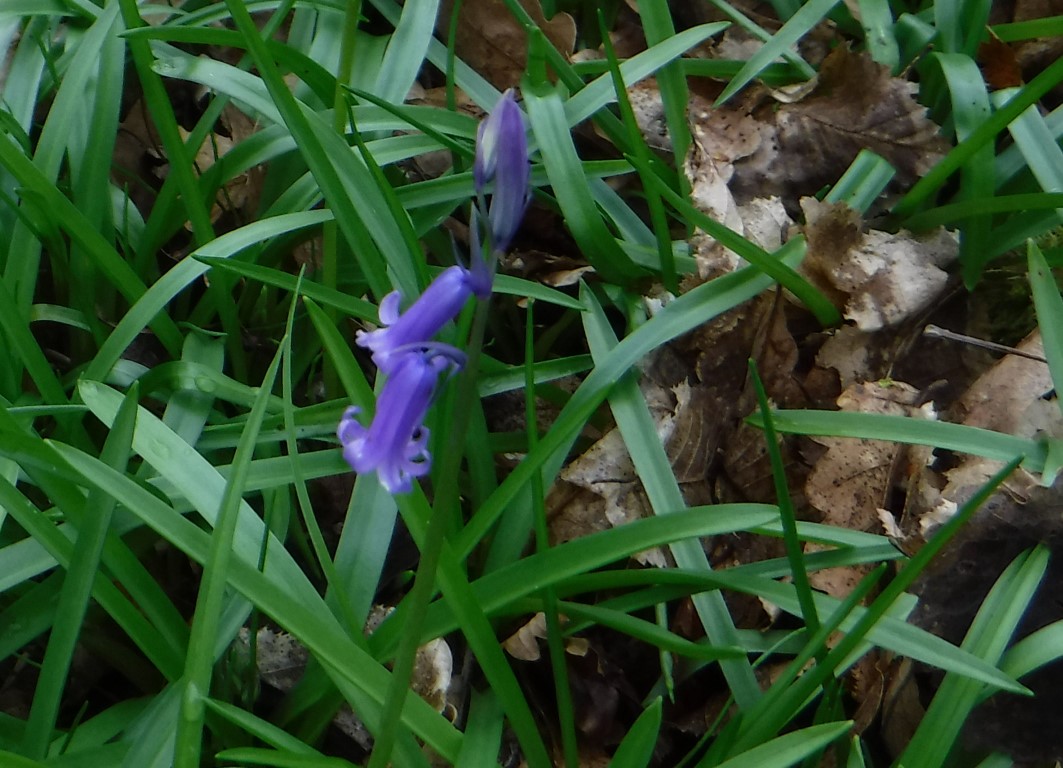
Total monthly rainfall: was 71.5 mm with a maximum daily rainfall of 12 mm on 30th April; recordable rain fell on 16 days during the month, and there were 17 days with 100% cloud-cover during some part of the day. Stormy weather into the 30th brought down many leaves, twigs, and small branches. Maximum daytime temperature ranged between 4°C on 30th April and 27°C on19th April. The month could be described as having a six day mini-summer amid a wintery spring.
-
 Magpie nest on island overlooking ground-nesting birds
Magpie nest on island overlooking ground-nesting birds
Magpie nest on island overlooking ground-nesting birds
Magpie nest on island overlooking ground-nesting birds
-
 First flowers on marsh marigold
First flowers on marsh marigold
First flowers on marsh marigold
First flowers on marsh marigold
-
 First flowering bluebell
First flowering bluebell
First flowering bluebell
First flowering bluebell
-
 First leaves on poplar
First leaves on poplar
First leaves on poplar
First leaves on poplar
https://kentfieldclub.org.uk/index.php?view=article&catid=23%3Alittle-barton-farm-wildlife-notes-&id=95%3Aapril-2018&tmpl=component&print=1&layout=default&page=&option=com_content&Itemid=22#sigProId0dfa438b3c
This weather combination produced 13 new first wildflower sightings for the month to bring the total to 23 for the year so far. They consisted of the first of many flowering dandelions on the 3rd, cuckoo flowers around the lake on the 5th, and marsh marigolds beside a garden pond on the 7th when we also saw a flowering bluebell in the wood, with another 23 to follow within 2 days. The wood anemone appeared on the 9th, closely followed on the 10th by the wood violet; large quantities of ground ivy began flowering in the fields on the 11th, greater stitchwort in the ride and woods on the 14th, and lesser stitchwort around the field margins on the 15th. A rise in temperature from mid-teens to 23°C on the 18th encouraged the yellow archangel and vast quantities of garlic mustard to bloom, followed by a brief lull until cow parsley on the 24th and herb Robert on the 25th completed our total for the month.
April produced our first seven butterfly species of the year, starting with the first of several peacock sightings in the garden on the 6th. Orange tip butterflies started to appear among the cuckoo flowers on the 14th; comma butterflies in the woodland ride on the15th; small whites in the garden among Hebe bushes on the 18th; holly blue around the garden, especially on muddy patches near pondwater, on the 20th; then speckled wood on fallen leaves in sunshine on the woodland floor. The final sighting was a green-veined white among celandines in the woodland ride on the 24th.
Only three moth-related species appeared this month to bring our total first-sightings to 8. We rescued a common quaker moth from a woodland pond on the 14th to save it from drowning, then saw our first green oak tortrix moth caterpillar “dangling” from a hornbeam on the 24th, before spying a single longhorn moth (Adella reamurella) nectaring on a woodland bluebell on the 28th.
Usually this moth is seen in large numbers flying around woodland hazel or hornbeam in sunny weather, but the weather here was cloudy and cool (9°C).
Large numbers of other insects appeared during the month, including our first blue-tailed damselfly on the 26th. Other insects in order of appearance were: pond skater and lesser water boatman on woodland ponds, and devil’s coach horse indoors by stored logs (5th); whirligig beetle on ponds and common carder bee on white deadnettle (7th); seven-spot ladybird on bramble (10th); a red-tailed bumblebee queen belatedly on the woodland edge (16th); alder fly on lakeside soft rush and a
queen wasp indoors (19th); crane fly, Tipula oleracea, on waterside rushes, and hornet flying close-by (20th); crane fly, Tipula maxima (21st) on waterside rushes, and St. Marks fly (24th) in the ride.
Other creatures recorded were a grass snake on the front woodland pond and a smooth newt in the back woodland pond on the 5th, two pipistrelle bats flying round the back garden at dusk on the 10th, and a great crested newt in the garden pond on the 11th.
Two migrating wild bird species arrived during April, these being the cuckoo on the 20th and a swallow on the 25th to bring our running total to 44 for the year so far. Breeding of the water-birds so far has been less than successful, mainly due to the depredations of the crows and magpies, possibly assisted by the increase in the number of raptors in recent years. Canada geese, moorhens, and mallards have all had eggs stolen from their nests, and one mallard with 12 ducklings on the 22nd has not been seen since.
As the month ends, almost all woodland and hedgerow trees and shrubs are now displaying the amazingly fresh full-green leaves associated with spring – the exceptions being a few oak and ash trees which are behind others of their species. Progression throughout the month has been as follows:
Budburst, horse chestnut ( 7th), beech (18th), oak (19th), ash (20th).
First leafing, hawthorn (2nd), hornbeam (7th), silver birch and field maple (12th), wild cherry (14th), horse chestnut (16th), poplar (19th), oak and beech (20th), ash (22nd).
Flowering, blackthorn blossom (2nd), poplar catkins (7th), wild cherry blossom (14th), hawthorn blossom (24th).